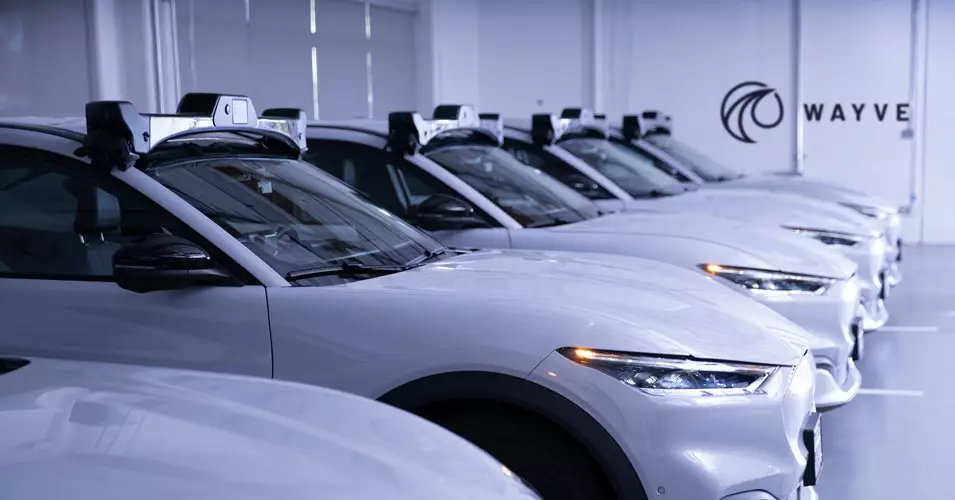As I step into the vibrant atmosphere, I’m greeted by a lavish lunch display featuring an array of fresh salads, a beautifully carved ham, and generous wedges of premium cheeses. This scene serves as a testament to the bustling energy surrounding the achievement of Wayve, a promising name in the autonomous vehicle (AV) sector. With a workforce that has reached 450, including a significant foothold in London and the inauguration of a new headquarters in Sunnyvale, California, Wayve is making substantial strides thanks to its recent influx of funding from Softbank.
Founded in 2017, Wayve’s journey is one that epitomizes resilience and gradual evolution within the high-stakes world of self-driving technology. The spotlight on Wayve intensified following its latest funding round in May—a crucial moment that indicates the tide is shifting for AV start-ups, particularly as they emerge from what is often termed the “trough of disillusionment” in technology. Many public eyes have been focused on autonomous vehicles, which often promise remarkable advancements only to fall short—an experience that companies like Apple, Uber, and Volkswagen can attest to as they pivoted away from their autonomous programs in recent years.
Despite the setbacks other industry players face, there’s newfound optimism. Major organizations like Alphabet’s Waymo report a significant number of driverless rides, providing a glimpse of operational viability. Waymo, now extending its reach to cities like Austin and Atlanta, leads the charge alongside other players like Tesla, which has introduced the Cybercab concept. The landscape is catalyzing a shift, with firms reconsidering their approaches and exploring how to integrate AI-driven methodologies.
What sets Wayve apart is not just its growing presence but its approach to self-driving technology, which leans heavily on artificial intelligence rather than traditional methods rooted in manual programming and elaborate infrastructure. Alex Kendall, the co-founder, embodies the scrappy entrepreneurial spirit often associated with early tech visionaries like Elon Musk. Kendall’s philosophy diverges starkly from the conventional belief that self-driving vehicles are an infrastructure and robotics engineering challenge.
Kendall remarked on the prevailing sentiments back in 2017 when Wayve was formed, stating, “During that time, everyone was eager, perceiving autonomous technology as just a stretch away—a magical fix to complex problems.” At that juncture, there was an overwhelming belief that innovation was just around the corner, driven largely by excitement rather than practical groundwork. Kendall’s foresight allowed him to see that existing approaches could hinder genuine progress—a perspective that has fueled Wayve’s drive towards a different kind of technological advancement.
The questions lingering in the minds of stakeholders revolve around scalability and the application of Wayve’s innovative methodologies. The potential of scaling its technology—a challenge that has thwarted other firms—seems increasingly feasible with a focus on machine learning and real-time data analysis. By leveraging AI, Wayve could expedite the development of driverless technology and broaden its reach—allowing for faster rollouts compared to its competitors.
Indeed, the company’s journey is marked by the crucial balance of ambition and pragmatism. The autonomous vehicle landscape continues to shift rapidly, but Wayve’s dedication to harnessing AI reflects a deeper understanding of the nuances involved in enhancing driving autonomy. Their unique perspective could very well dictate the pace at which we see self-driving cars transforming urban landscapes.
While many contenders falter in their race to revolutionize transport, Wayve stands as a beacon of innovation amidst the complexities of the autonomous vehicle sector. Its commitment to an AI-centric model fosters the hope that success isn’t a mere façade, but an achievable reality. In a world long fascinated by the promise of self-driving cars, the road ahead for Wayve appears to be one paved with potential, illuminating a pathway for future technological breakthroughs in AI and transport. In an industry rife with challenges, Wayve’s journey may redefine perceptions and awaken a new era of mobility.

